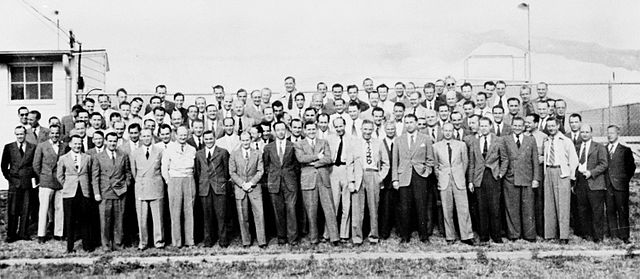In the uneasy interregnum between Nazi defeat and Soviet ascendance, as Europe’s cities lay in ruins and the ashes of fascist ambition still smoldered, the United States made a decision as consequential as it was morally fraught. On June 20, 1945, the Department of State formally approved the secret transfer of Wernher von Braun and his team of German rocket scientists to American custody—a pivotal act within the covert initiative later named Operation Paperclip. The move, cloaked in bureaucratic language and sanitized intelligence memoranda, amounted to nothing less than a calculated suspension of postwar moral clarity in the name of preemptive strategic dominance.
At its center stood von Braun—urbane, brilliant, and unrepentant. As the chief architect of the Third Reich’s V-2 rocket program, he had served the Nazi regime not as a conscript, but as an enthusiastic participant. A member of the Nazi Party since 1937 and commissioned into the SS by 1940, von Braun’s rise was inseparable from Hitler’s militaristic vision. His crowning achievement, the V-2 missile, terrorized Allied cities during the war’s final year, raining destruction on London and Antwerp from the upper atmosphere in the first horrifying glimpse of modern rocketry’s military potential. That these missiles were assembled in underground tunnels by tens of thousands of enslaved laborers—prisoners from Dora-Mittelbau who perished in appalling conditions—was not incidental, but intrinsic to the system von Braun served.
Yet it was precisely this expertise, born in atrocity, that American military strategists now sought to preserve. With Soviet troops already scouring occupied Germany for scientists and equipment, the U.S. War Department viewed the rocket team not as fugitives from justice, but as prizes in a zero-sum technological war that had merely shifted its front from Berlin to Moscow. The ideological origins of these men became a secondary concern—an unfortunate complication to be papered over by redacted personnel files, euphemistic character evaluations, and legal reinterpretations of culpability.
Operation Overcast, renamed Paperclip to obscure its connections to wartime Germany, thus proceeded not despite von Braun’s past, but in defiance of it. Though President Truman had publicly ordered that no “active” Nazi Party members or individuals involved in “Nazi militarism” be admitted into U.S. programs, military officials circumvented the prohibition with studied cynicism. They argued that von Braun’s political affiliations had been merely “nominal,” that his SS membership was honorary, that his presence at concentration camp sites was supervisory rather than administrative. They did not believe these things; they needed to.
By the autumn of 1945, von Braun and over 100 of his colleagues were living in the American Southwest—first at Fort Bliss, then at White Sands—working under military supervision to reassemble the shattered remnants of Nazi rocket science into a foundation for American dominance. Their V-2s were test-fired not at enemies, but at the desert sky. Their theories became blueprints for the Redstone and, ultimately, the Saturn V—a technological triumph that would carry the American flag to the lunar surface, with von Braun’s name emblazoned in textbooks and televised tributes.






